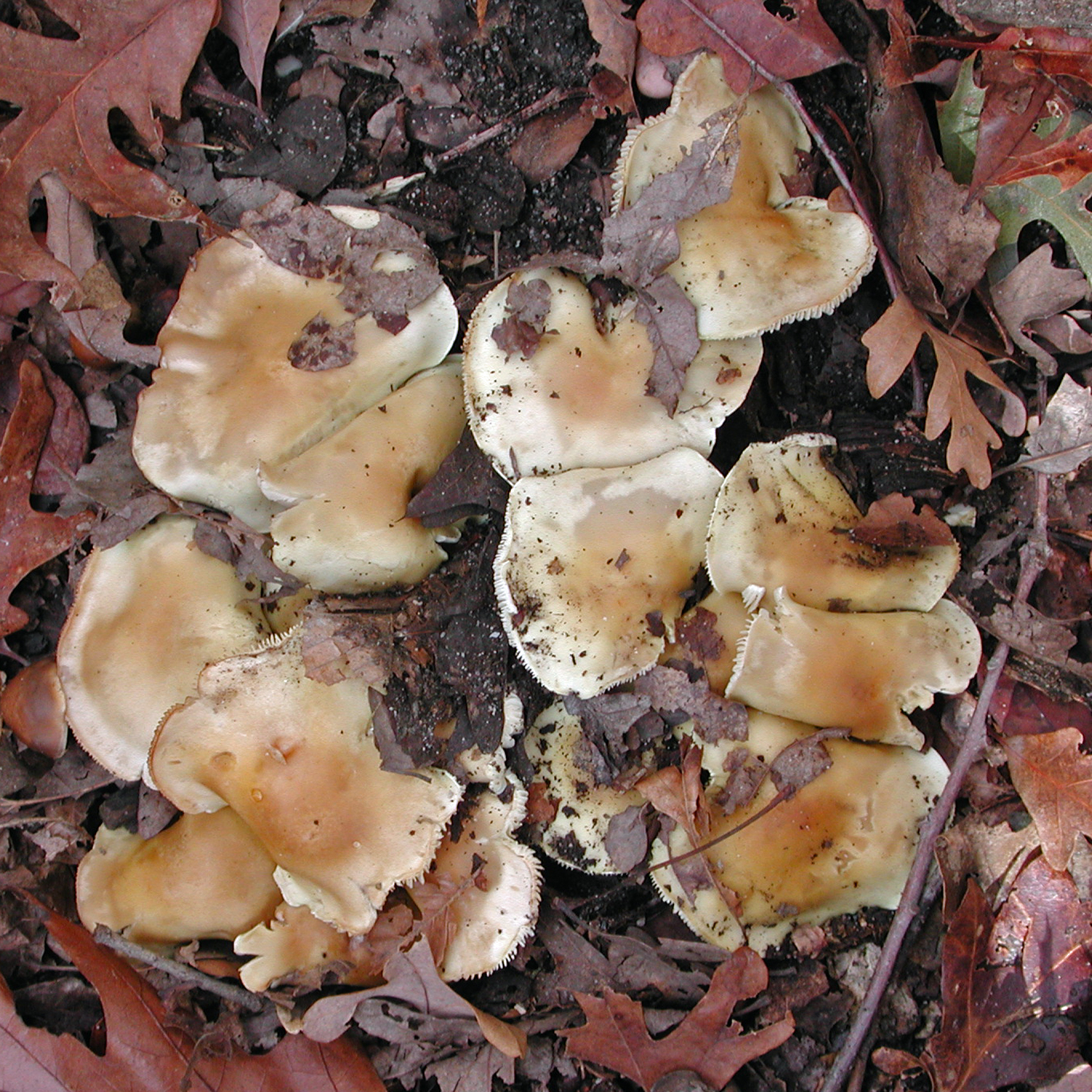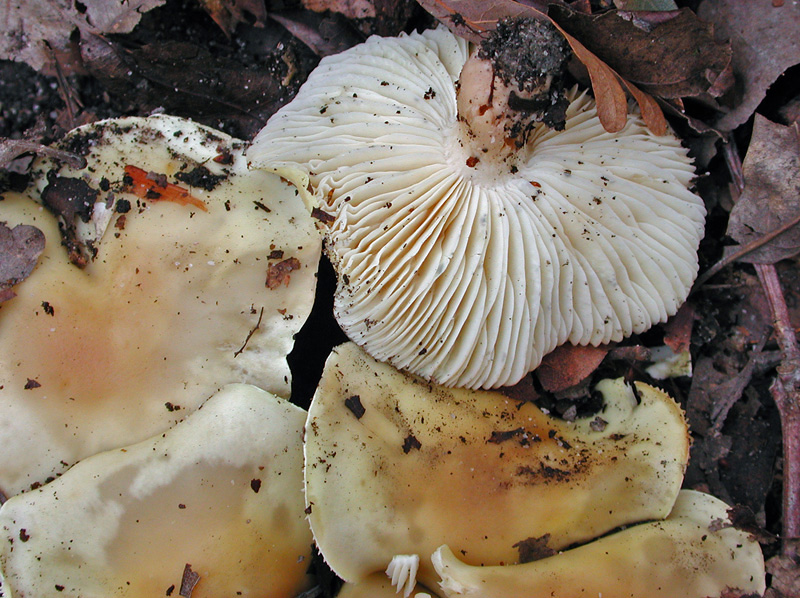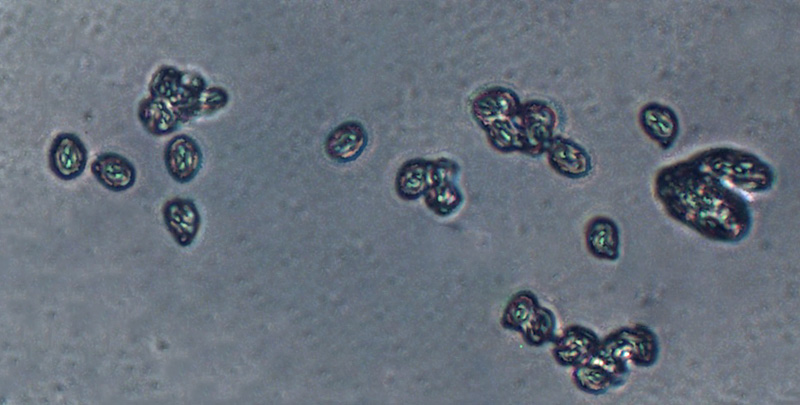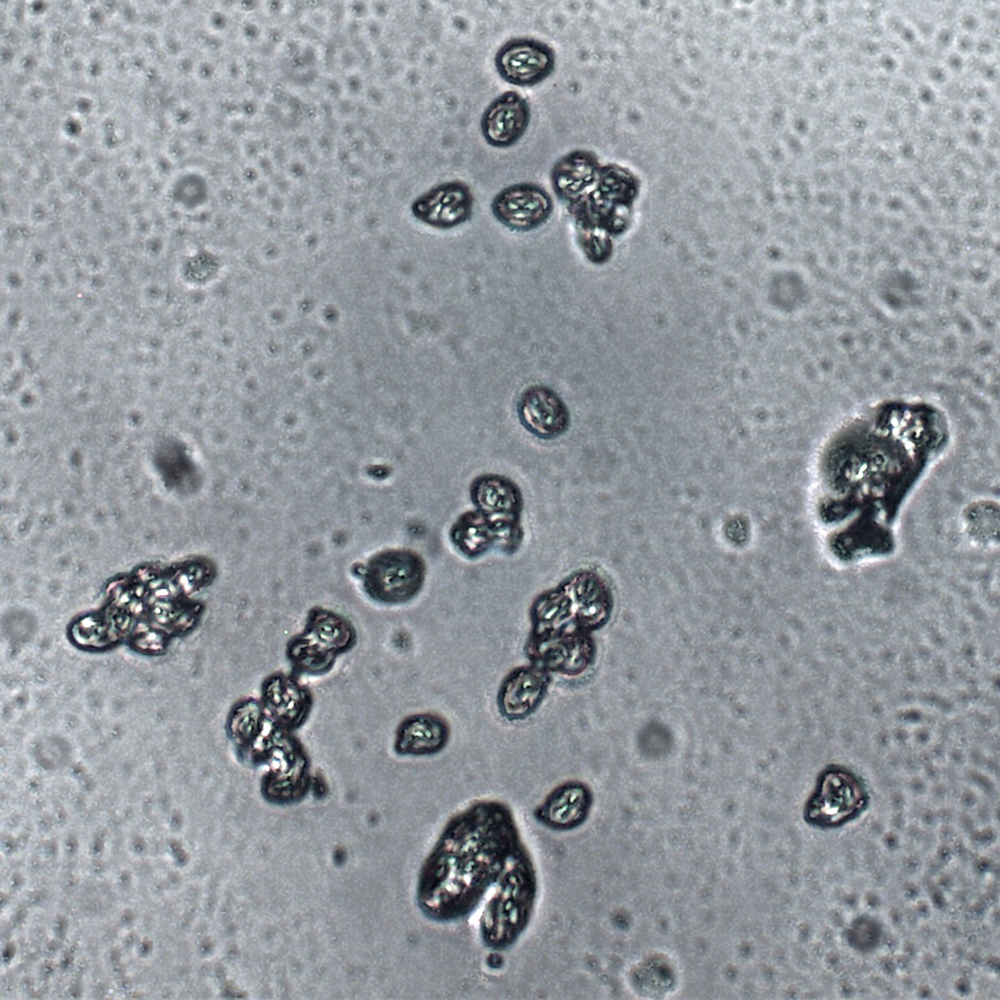Map Snapshot


12 Records
Status
Usually found in large clusters on the ground in varied habitats: forests, trail edges, grassy edges, wood edges.
Description
Cap: yellowish-brown convex/flat, smooth, moist; margin may be irregular. Gills: Whitish, close. Stalk: white, becoming brownish below (J. Solem, pers. comm.).
Seasonality Snapshot
Source: Wikipedia
| Lyophyllum decastes | |
|---|---|

| |
| Scientific classification | |
| Domain: | Eukaryota |
| Kingdom: | Fungi |
| Division: | Basidiomycota |
| Class: | Agaricomycetes |
| Order: | Agaricales |
| Family: | Lyophyllaceae |
| Genus: | Lyophyllum |
| Species: | L. decastes
|
| Binomial name | |
| Lyophyllum decastes | |
| Synonyms | |
| |
Lyophyllum decastes is a species of fungus in the family Lyophyllaceae. Basidiocarps (fruit bodies) are agaricoid (gilled mushrooms) and are formed in large clusters on the ground. In the UK, Lyophyllum decastes has the recommended English name of clustered domecap;[1] in North America it is known as the fried chicken mushroom.[2] The species is cultivated for food in China and Japan.
Description
[edit]The caps are smooth, varied in color,[3] and range from 4–12 cm (1+5⁄8–4+3⁄4 in) wide. The whitish-grayish[3] stalks are 5–10 cm (2–3+7⁄8 in) long and 1–3 cm (3⁄8–1+1⁄8 in) wide. Gills are white but may yellow slightly with age. The firm flesh remains white on exposure.[4] The spores are white.[5]
Lyophyllum semitale and Pluteus petasatus are similar in appearance,[5] as is L. fumosum; it and L. loricatum are sometimes grouped with L. decastes as a species complex, lacking distinct, differentiating, morphological features.[3]
Ecology
[edit]Growing in dense, often huge clusters on the ground, L. decastes is usually found where the ground has been disturbed such as roadbeds, gravel, paths, landscaping areas, and sometimes in woods.[4] It is variously considered saprotrophic[6] or ectomycorrhizal.[7]
Distribution
[edit]The species was originally described from Sweden and is widespread throughout Europe and north temperate regions. It is prolific in summer and fall until spring on the U.S. West Coast and is widely distributed in North America.[4][8] It also occurs in eastern temperate Asia.
Economic usage and edibility
[edit]Lyophyllum decastes is commercially cultivated in Japan, where it is known as hatake shimeji,[9] and in China, where it is known as luronggu.[10] The fungus is considered to be both a food and a health supplement and is grown on sawdust or bark compost. In North America, the species is considered edible and occasionally collected in the wild, but there are some reports of gastric upsets[2] and possible confusion with poisonous Entoloma species or Clitocybe dilatata.[11]
| Lyophyllum decastes | |
|---|---|
| Gills on hymenium | |
| Cap is convex | |
| Hymenium is adnate or decurrent | |
| Stipe is bare | |
| Spore print is white | |
| Edibility is edible or choice | |
References
[edit]- ^ Holden L. (April 2022). "English names for fungi April 2022". British Mycological Society. Retrieved 2024-04-16.
- ^ a b Phillips, Roger (2010). Mushrooms and Other Fungi of North America. Buffalo, NY: Firefly Books. p. 56. ISBN 978-1-55407-651-2.
- ^ a b c Trudell, Steve; Ammirati, Joe (2009). Mushrooms of the Pacific Northwest. Timber Press Field Guides. Portland, OR: Timber Press. pp. 112–113. ISBN 978-0-88192-935-5.
- ^ a b c Phyla and decastes description
- ^ a b Davis, R. Michael; Sommer, Robert; Menge, John A. (2012). Field Guide to Mushrooms of Western North America. Berkeley: University of California Press. p. 139. ISBN 978-0-520-95360-4. OCLC 797915861.
- ^ Kobayashi Y, Shibata TF, Hirakawa H, Nishiyama T, Yamada A, Hasebe M, Shigenobu S, Kawaguchi M (2023). "The genome of Lyophyllum shimeji provides insight into the initial evolution of ectomycorrhizal fungal genomes". DNA Research. 30. doi:10.1093/dnares/dsac053. PMC 9896470.
- ^ Agerer R, Beenken L (1998). "Lyophyllum decastes (Fr.) Sing. + Quercus robur L.". Descriptions of Ectomycorrhizae. 3: 43–47.
- ^ Phillips, R. (1981). Mushrooms and other fungi of Great Britain & Europe. Cavaye Place, London SW10 9PG: Pan Books Ltd. p. 43. ISBN 9780330264419.
{{cite book}}: CS1 maint: location (link) - ^ Pokhrel CP, Yoshimoto H, Iida S, Ohga S (2004). "Mycelial growth and fruit body formation of Lyophyllum decastes in livestock compost". J. Fac. Agr., Kyushu Univ. 49 (2): 273–282. doi:10.5109/4587.
- ^ Xu L, Yang W, Qiu T, Gao X, Zhang H, Zhang S, Cui H, Guo L, Yu H, Yu H (2023). "Complete genome sequences and comparative secretomic analysis for the industrially cultivated edible mushroom Lyophyllum decastes reveals insights on evolution and lignocellulose degradation potential". Front. Microbiol. 14. doi:10.3389/fmicb.2023.1137162. PMC 10078946. PMID 37032898.
- ^ Miller Jr., Orson K.; Miller, Hope H. (2006). North American Mushrooms: A Field Guide to Edible and Inedible Fungi. Guilford, CN: FalconGuide. p. 115. ISBN 978-0-7627-3109-1.
Further reading
[edit]- Moncalvo, J.-M. , Rehner, S. A. & Vilgalys, R. (1993). "Systematics of Lyophyllum section Difformia based on evidence from culture studies and ribosomal DNA sequences". Mycologia 85(5): 788–794.
External links
[edit] Media related to Lyophyllum decastes at Wikimedia Commons
Media related to Lyophyllum decastes at Wikimedia Commons




